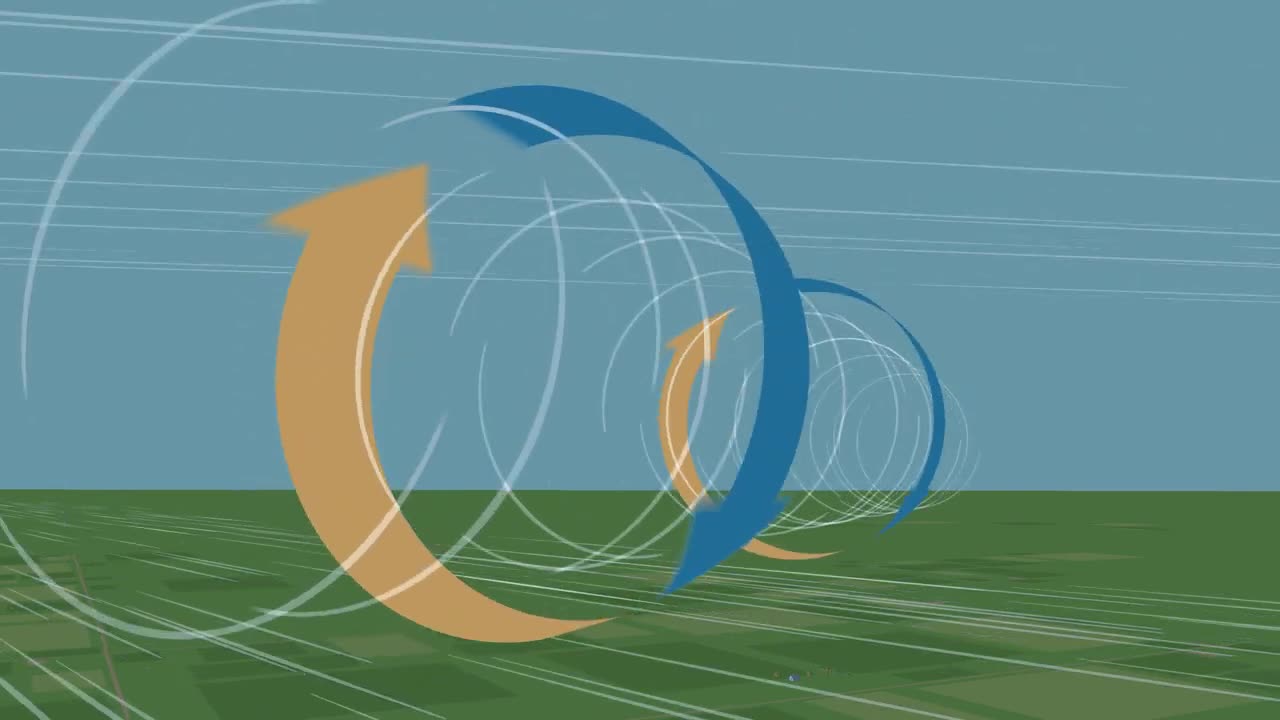Premium Only Content

What Causes a Tornado? - Meteorological Basics
What Causes a Tornado?
The swirling, funnel-shaped winds of a tornado are easily recognizable—and they can be very dangerous. But what causes these unique and violent weather phenomena?
A tornado is a violently rotating column of air that is in contact with both the surface of the Earth and a cumulonimbus cloud or, in rare cases, the base of a cumulus cloud. It is often referred to as a twister, whirlwind or cyclone, although the word cyclone is used in meteorology to name a weather system with a low-pressure area in the center around which, from an observer looking down toward the surface of the Earth, winds blow counterclockwise in the Northern Hemisphere and clockwise in the Southern. Tornadoes come in many shapes and sizes, and they are often (but not always) visible in the form of a condensation funnel originating from the base of a cumulonimbus cloud, with a cloud of rotating debris and dust beneath it. Most tornadoes have wind speeds less than 180 kilometers per hour (110 miles per hour), are about 80 meters (250 feet) across, and travel several kilometers (a few miles) before dissipating. The most extreme tornadoes can attain wind speeds of more than 480 kilometers per hour (300 mph), are more than 3 kilometers (2 mi) in diameter, and stay on the ground for more than 100 km (62 mi)
More Meteorology Videos
https://rumble.com/playlists/JfAj918PQuc
-
 18:15
18:15
World2Briggs
9 hours ago $5.30 earned10 Cities That Are Slowly Emptying Like a Sad Party
13.1K16 -
 11:34
11:34
Mrgunsngear
18 hours ago $1.86 earnedSiege Suppressors ROC556 Low Backpressure Silencer Review 🤫
11.7K5 -
 30:57
30:57
Clownfish TV
5 hours agoDisney Drops DEI and Goes PRO-AMERICA?!
15K20 -
 17:35
17:35
QNewsPatriot
18 hours ago(4/25/2025) | AUDIO CHAT 166 | SG Sits Down w/ Sovereign Radio Founder Scotty Saks: Vaxx Lawsuits and the #NeverAgain Telethon
22.6K14 -
 19:51
19:51
CatfishedOnline
2 hours agoSpouse Sends $50,000 To A Man Who Doesn't Exist 😱
11.5K1 -
 11:59
11:59
ariellescarcella
18 hours agoThe Dark Side Of "Queer Joy"
9.73K11 -
 1:12:39
1:12:39
Squaring The Circle, A Randall Carlson Podcast
1 day ago#045 What Are The Structures Beneath The Great Pyramids in Giza? Squaring the Circle: A Randall Carlson Podcast
14.3K4 -
 2:08:05
2:08:05
Badlands Media
1 day agoDevolution Power Hour Ep. 349: Trump’s Geopolitical Gambits, Sports Psyops, and the Regime’s Unraveling
125K108 -
 1:08:36
1:08:36
Man in America
20 hours agoUS, China, Israel & the Battle for the New World Order w/ Boone Cutler
145K140 -
 2:37:49
2:37:49
The Connect: With Johnny Mitchell
1 day ago $15.50 earnedBlackwater Mercenary EXPOSES Private Military War Secrets From The Middle East, Fueling Terrorism
69.9K69